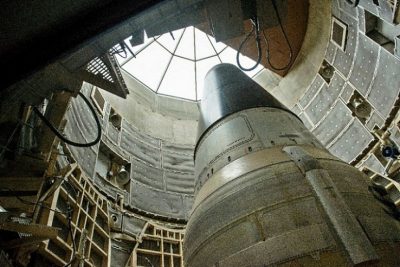Putin Explains Why Russia’s New Weapons Can’t be Stopped by ABMs

In a “Russia Insight” TV interview of Russian President Vladimir Putin that was uploaded to youtube with English subtitles on March 10th, NBC’s Megyn Kelly asked him why America’s ABMs wouldn’t be able to knock out Russia’s new missiles. He answered (16:40): “We have created a set of new strategic weapons that do not follow ballistic trajectories, and the anti-missile defence systems are powerless against them. This means that the U.S. taxpayers’ money has been wasted.”
A ballistic missile — the types of missiles at which an ABM or anti-ballistic missile is directed — is not just any type of missile, but instead is a missile with a certain type of trajectory, which goes above the Earth’s atmosphere and then comes down largely using the force of gravity instead of continuously under propulsion and strict control. Putin is saying that Russia’s new missiles, which are designed so as not to be adhering to the flight-paths that ballistic missiles do, can’t be hit by anti-ballistic missiles.
Putin referred to Russia’s largest new missile as “Voyevoda.” The missile’s manufacturer posts online about it, “33 launches in all were conducted, 97.4% of them successful.”
She then asked him whether these weapons will be used only if Russia comes under a nuclear attack, or against any attack; he answered it would be either a nuclear attack “or a conventional attack on the Russian Federation, given that it jeopardizes the state’s existence.” He implied that if an ally of Russia gets attacked, Russia will respond only with non-nuclear forces.
Then, he volunteered to say, in response to a question about what the issues would be that Russia would want formal negotiations with the U.S., that,
“today, when we are acquiring weapons that can easily breach all anti-ballistic missile systems, we no longer consider the reduction of ballistic missiles and warheads to be important.”
She asked whether the new weapons he was referring to could be “part of the discussion,“ and he said they “should, of course, be included in the grand total.”
This interview continued with non-nuclear matters, such as the accusations that he had interfered in America’s 2016 Presidential contest, or tried to. His answers were very direct, but viewers who support the ongoing Russiagate investigations will probably not believe his answers.
As regards the weapons-issues, there is posted online a brilliant technical description of the types of engineering issues that the Russians have been developing for decades, in which they’ve led the world and in which their lead has been widening, and which were behind what Putin was speaking about in his March 1st speech. Though that technical description was a reader-comment, instead of an article, it was article-length, and makes the issues clear; and the article that it was commenting upon was itself brilliant: and it links to an earlier brilliant article by Andrei Martyanov; so, all three of those together enable a pretty clear understanding of what’s involved in Russia’s biggest strategic-weapons breakthroughs.
*
Investigative historian Eric Zuesse is the author, most recently, of They’re Not Even Close: The Democratic vs. Republican Economic Records, 1910-2010, and of CHRIST’S VENTRILOQUISTS: The Event that Created Christianity.

